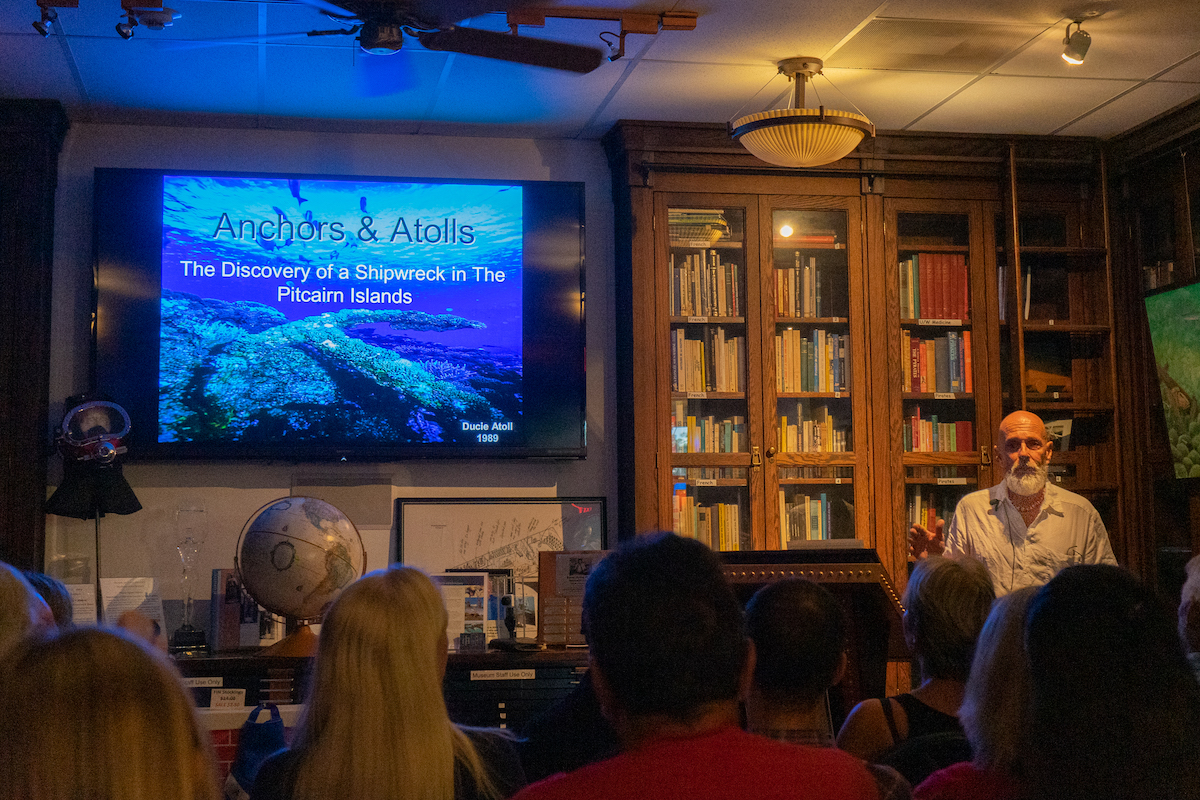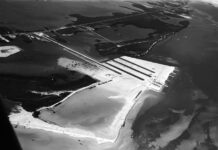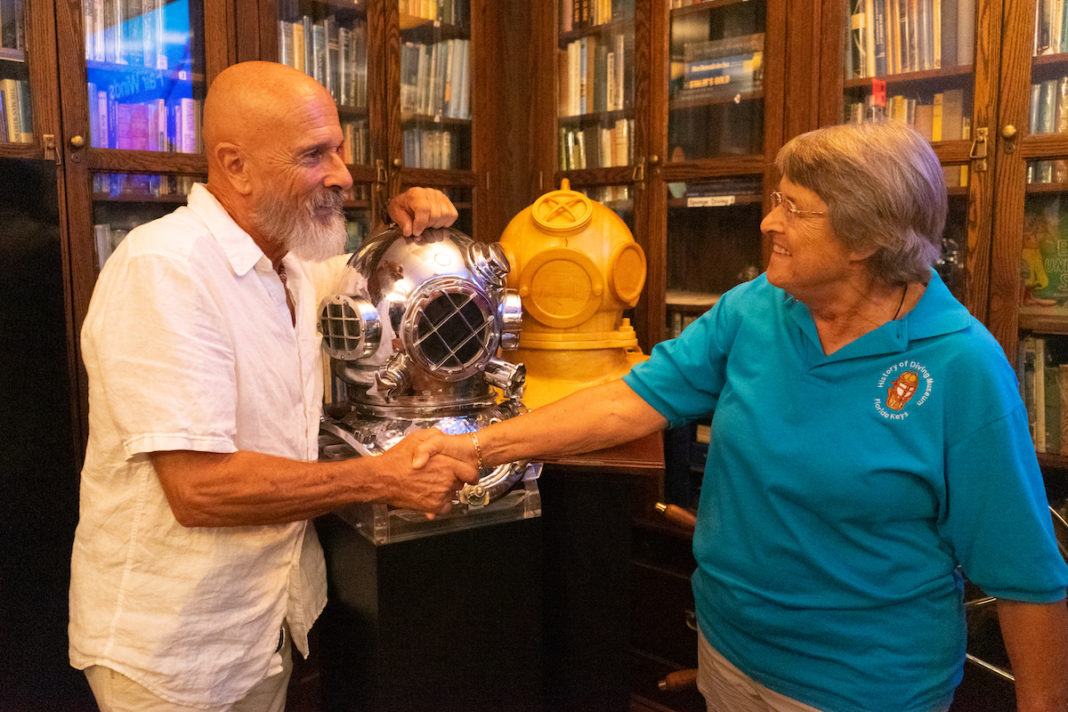In 1989, Jack S. Grove discovered the shipwreck of the vessel Acadia at Ducie Atoll, an uninhabited islet and one of four islands in the Pitcairn Island group. He shares his tale of discovery and misadventures to a captivated crowd at the History of Diving Museum’s monthly “Immerse Yourself” talk.
Grove begins by joking how Pitcairn is not “on the map” for anyone. The island chain coincidentally also isn’t printed on the globe that Grove uses to “show” where the islands are. “You see this label? Pitcairn would be right under there,” he grins, pointing to a covered part of the South Pacific.
Grove, a master in “edu-tainment,” begins with a flourish. “The story — the adventure tonight — is part marine biology, part oceanography, part geography, and part geology. It’s about how I almost sank a Zodiac because that anchor was tied to it,” he says. “And I tied it!” Grove hits his stride as everyone in the room realizes this isn’t your normal bedtime story.
For the remainder of the night, the audience roars in laughter, captivated by Grove’s tale of mutiny, close calls, and foolish-in-retrospect decisions. Disguised within the humor, Grove provides a historical account of the watery demise of the Acadia and of his lasting legacy on Pitcairn — retrieving the ship’s anchor.
It all begins with the intentional burning and sinking of another ship — the H.M.S. Bounty, of “Mutiny on the Bounty” fame. On the morning of April 28, 1789, led by Acting Lieutenant Fletcher Christian, a group of mutineers seized control of the Bounty from captain Lieutenant William Bligh. The rebels left Bligh and those loyal to him at sea in a small skiff and took the Bounty to Tahiti and eventually Pitcairn in search of safe haven. They set the Bounty ablaze in what is now Bounty Bay, sitting on shores and watching their last connection to their old lives disappear. The mutineers and Tahitian women they’d taken with them founded the community at Pitcairn, and some descendants still live on the islands to this day.
In 1989, a young Grove discovered the anchor of the Acadia haphazardly while working on a nearby ship. In 1881, the Acadia had sailed from San Francisco for Ireland with a cargo of wheat. On June 5, she sank after going aground at Ducie Atoll. The 11 survivors found themselves at Pitcairn. While most left, one crewmember, Phillip Coffin, stayed and married Mary Jane Warren, a local woman.
Millie Florda Coffin was one of their 10 children. In 1943, Millie Coffin married Warren Clive Christian, a direct descendant of original Bounty mutineer Flethcher Christian, and changed her name to Millie Christian.

On April 28, 1989, the bicentennial of the mutiny on the Bounty and founding of Pitcairn, Grove was given permission to salvage the anchor of the Acadia. “It was pretty apparent that I had no experience with salvage,” he says. “I never used a lift bag before, and I bought three of them with funding from Stanford. What I should’ve remembered is the laws of physics: air expands as it rises.”
The lift bags were too effective getting the heavy anchor off the reef, and it subsequently bounced up and down between the surface and the bottom before Grove could secure it to his Zodiac.
Through a few more bad choices and sheer luck, Grove pulled the anchor back to the main expedition ship, only to lose it in deeper water and realize that it was still tied to his Zodiac. Barely escaping being pulled down with the boat, he explains his thoughts at the time. “This is gonna be very hard to explain to the office. Not only did I lose the anchor, but I sank the Zodiac…and we also had a film crew.” Amidst laughs, he adds, “The sun was setting by the way, and there were several big tiger sharks.”
They did eventually retrieve the Acadia’s anchor and set it atop a hill at Bounty Bay on Pitcairn Island. With more emotion and fewer jokes, Grove concludes his tale of a lifetime. He describes an old woman with a cane who approached him as he sat atop the anchor. Millie Christian, daughter of Acadia crewman Phillip Coffin, had come to thank him.
“My father’s ship has finally come home,” she said. Grateful, Grove tells the audience, “It was the apex of my life.”
























